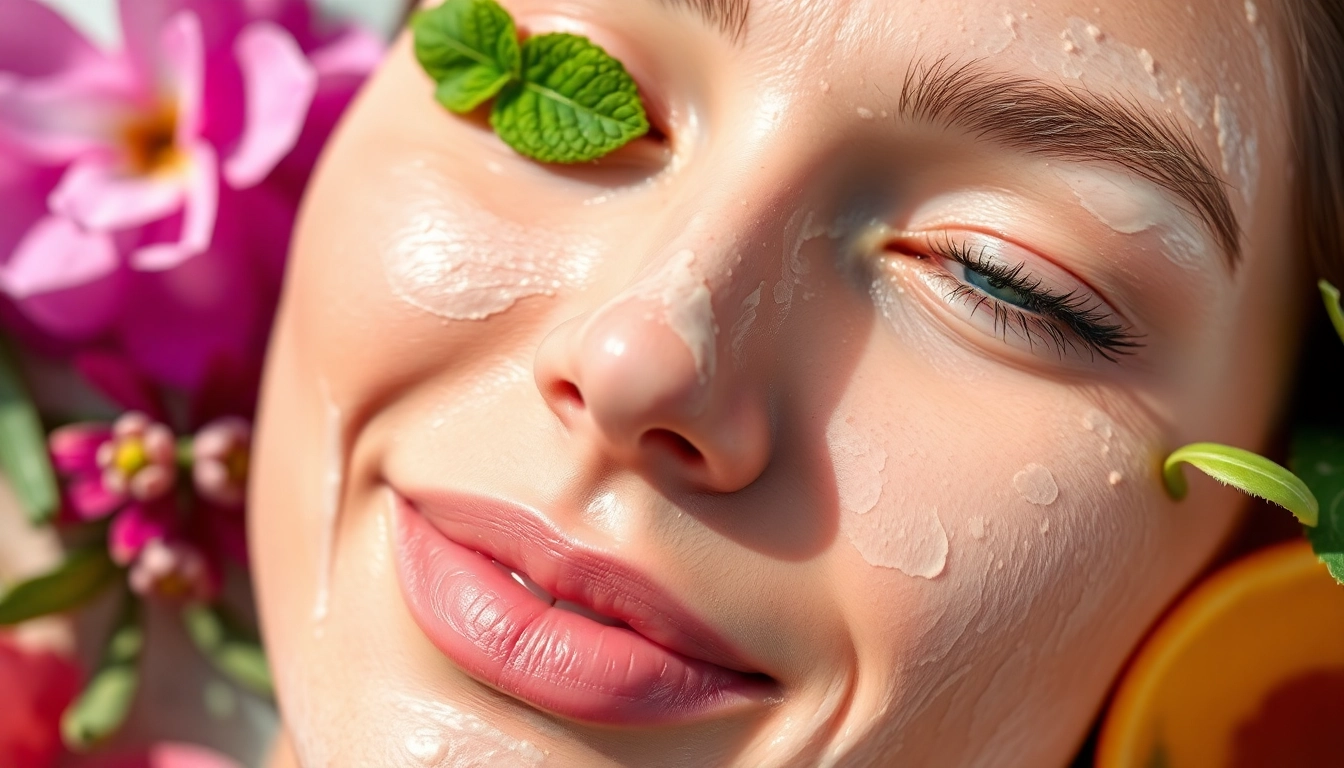Revitalize Your Skin: The Benefits of Using a Face Mask
Understanding the Face Mask: Types and Ingredients
Face masks have evolved into an essential component of skincare routines, offering a multitude of benefits tailored for various skin types and concerns. Understanding the different types and ingredients available empowers us to make informed choices for our skincare regimen. Incorporating a face mask into your routine can ultimately transform your skin health and appearance.
Popular Types of Face Masks
There are several popular types of face masks, each designed to serve specific purposes and address various skin concerns. Here are some of the most widely used:
- Clay Masks: Ideal for oily and acne-prone skin, clay masks work by absorbing excess oil and impurities, helping to unclog pores.
- Cream Masks: These nourishing masks are perfect for dry or mature skin, providing deep hydration and enhancing the skin’s natural moisture barrier.
- Sheet Masks: Infused with serums, sheet masks offer concentrated treatment and are perfect for quick hydration and targeting specific skin issues.
- Gel Masks: Often lightweight, gel masks hydrate and soothe the skin, making them great for sensitive skin types.
- Exfoliating Masks: These masks contain enzymes or acids that help to remove dead skin cells, promoting a smoother and brighter complexion.
Key Ingredients for Skin Types
When selecting a face mask, it’s essential to consider your skin type and the active ingredients that will best benefit it:
- For Oily Skin: Look for masks containing salicylic acid, clay, or charcoal to help absorb excess oil and prevent breakouts.
- For Dry Skin: Opt for masks rich in hyaluronic acid, glycerin, or natural oils to boost hydration and restore moisture.
- For Sensitive Skin: Seek calming ingredients like aloe vera, chamomile, and calendula, which help reduce irritation and redness.
- For Mature Skin: Masks containing antioxidants such as vitamin C, peptides, and retinol can stimulate collagen production and enhance skin elasticity.
- For Combination Skin: A balanced approach with clay for oil-prone areas and moisturizing ingredients for dry patches is beneficial.
Choosing the Right Face Mask for You
Selecting the appropriate face mask can seem overwhelming, but it can be simplified by considering the following factors:
- Understand Your Skin Type: Conduct a skin assessment to identify whether your skin is oily, dry, sensitive, combination, or normal.
- Identify Your Skin Concerns: Determine what specific issues you want to address—whether it’s hydration, acne, aging, or dullness.
- Read Ingredients: Familiarize yourself with beneficial and harmful ingredients relevant to your skin type.
- Test Before Committing: Consider patch-testing a mask before applying it to the entire face.
Benefits of Using a Face Mask Regularly
Using a face mask doesn’t merely serve as a pampering session; it offers tangible benefits that can lead to healthier skin when incorporated into a regular skincare routine.
Hydration and Nourishment
Face masks are a fantastic way to deliver a concentrated dose of hydration and nutrients to your skin. Masks containing ingredients like hyaluronic acid, aloe vera, or natural oils can help to:
- Boost moisture levels significantly.
- Enhance skin texture by plumping and smoothing.
- Provide a radiant, healthy glow, especially in dehydrated skin.
Exfoliation and Brightening
Exfoliating masks can effectively remove dead skin cells, revealing fresh skin beneath. Regular exfoliation can help:
- Minimize the appearance of fine lines and wrinkles.
- Brighten the complexion and improve skin tone.
- Prevent clogged pores and acne breakouts.
Relaxation and Self-Care
Aside from the physical benefits, using a face mask can serve as a form of self-care, providing a moment of respite in a busy day. Taking the time to apply a face mask can help to:
- Reduce stress and promote relaxation through ritual.
- Create a sense of mindfulness and self-love.
- Encourage a better mindset about skincare and health.
How to Effectively Apply a Face Mask
To reap the full benefits of your face mask, applying it correctly is crucial. A few simple steps can enhance your experience and results.
Prep Your Skin Before Application
The right preparation can make all the difference. Begin with these steps:
- Cleanse: Start with a gentle cleanser to remove makeup, dirt, and oil.
- Exfoliate: If necessary, use a mild exfoliant to slough off dead skin cells.
- Steam: Steaming your face beforehand can open up pores, allowing active ingredients to penetrate deeper.
Application Techniques for Best Results
Application technique is crucial for maximizing the effectiveness of the mask:
- Even Distribution: Use a clean brush or your fingertips to apply a thin, even layer across your face, avoiding the eyes and mouth.
- Patience is Key: Allow the mask to sit for the recommended time, usually between 10 to 20 minutes, for best results.
- Mindfulness: Use this time to relax, practice breathing exercises, or meditate.
Post-Mask Skincare Routine
After removing your mask, it’s vital to follow up with an appropriate skincare routine:
- Rinse Off: Gently remove the mask with lukewarm water and a soft cloth or directly with your hands.
- Tone: Use a toner to restore your skin’s pH balance and prepare it for further treatment.
- Moisturize: Follow up with a hydrating serum and a good moisturizer to lock in moisture and nourishment.
Common Face Mask Mistakes to Avoid
While face masks can provide numerous benefits, there are common pitfalls that can diminish their effectiveness or even harm your skin. Awareness of these mistakes will help you achieve better results.
Overuse and Skin Reactions
Using a face mask too frequently can lead to skin irritation or breakouts. Here’s how to avoid this:
- Follow the instructions on your product regarding frequency—most masks are designed for use 1-3 times a week.
- Give your skin time to recover between applications, especially with exfoliating masks.
- If you notice irritation, cut back on use and consult a dermatologist if necessary.
Ignoring Skin Types and Conditions
Choosing a mask without considering your unique skin type can lead to adverse effects:
- For oily skin, avoid masks that can exacerbate oil production.
- For dry skin, skip products with harsh chemicals or fragrances that can strip moisture.
- Consider consulting a skincare professional for personalized recommendations.
Skipping Patch Testing
Patch testing is crucial to avoid allergic reactions:
- Apply a small amount of the product on a discreet area of your skin, like behind the ear or on your wrist.
- Wait 24-48 hours to see if any adverse reactions occur before full application.
DIY Face Mask Recipes: Customize Your Experience
For those looking to personalize their skincare, DIY face masks are an excellent option to tailor treatments to specific needs.
Simple Recipes for Glowing Skin
Here are a few straightforward DIY recipes:
- Honey and Yogurt Mask: Mix equal parts honey and plain yogurt for a hydrating mask packed with antioxidants.
- Banana and Oat Mask: Mash half a banana and combine it with two tablespoons of oats for a gentle exfoliating and hydrating mask.
- Avocado and Olive Oil Mask: Blend half an avocado with a teaspoon of olive oil for a deeply nourishing treatment suitable for dry skin.
Incorporating Superfoods into Masks
Boosting your DIY masks with superfoods can enhance their effectiveness:
- Matcha Powder: Rich in antioxidants, add matcha to your face mask for an anti-aging effect.
- Turmeric: Known for its anti-inflammatory properties, a pinch of turmeric can help calm irritated skin.
- Spirulina: This blue-green algae is nutrient-rich and can help brighten your complexion.
Storing and Preserving Your DIY Masks
To ensure the longevity of your homemade masks:
- Store unused masks in an airtight container in the refrigerator to prolong freshness.
- Use masks within 5-7 days of preparation to avoid spoilage.
- Label containers with the date of preparation for tracking.



